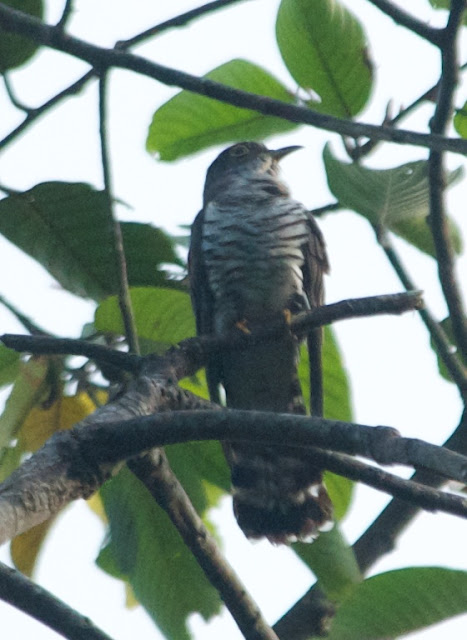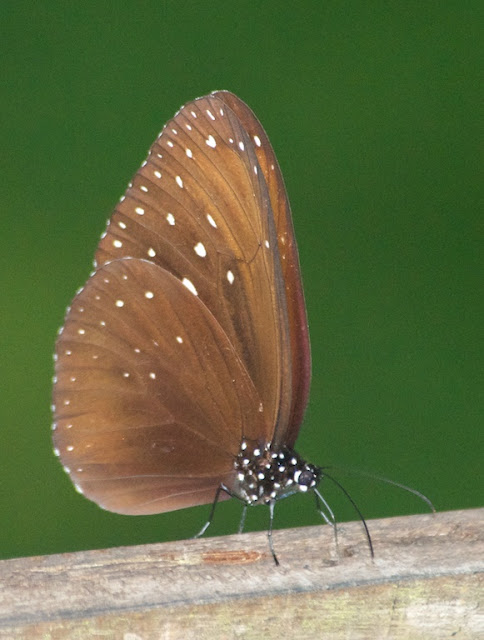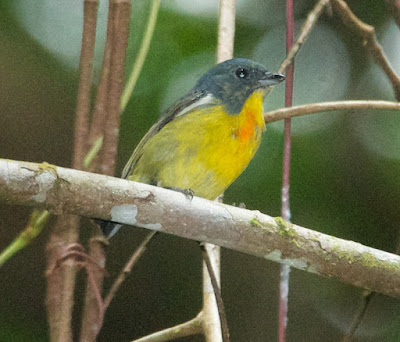After our MNS family night around Kubah National Park's celebrated frog pond (February 22-23, 2014), Ryan got a late-night lift home with Hans while I stayed on with Yeo for a bit of morning birding. There weren't a lot of birds about, as it happened, but in the daylight I could at least appreciate the vegetation: things like the bicycle-wheel leaves of the common Fan Palm (Licuala sp).
Once again, I felt the lack of a handy botanist keenly. What are these handsome red berries?
How about this attractive spike of yellow flowers, growing along the road edge? A monocot of some sort, I presume?
This may be Spindle Ginger (Hornstedtia havilandii). According to Lamb et al., A Guide to the Gingers of Borneo (Natural History Publications (Borneo), 2013), skippers (like the unobtrusive little butterfly in this photo) cannot reach the plant's pollen and so act, intentionally or otherwise, as nectar thieves, feeding at the flowers but not pollinating them.
With Yeo as a companion, I can always count on seeing things I would probably have missed otherwise. The Indian Cuckoo (Cuculus micropterus) is a bird that I hear almost everywhere in Malaysia (its four-note song vaguely recalls the opening theme of Beethoven's Fifth Symphony), but it is frustratingly difficult to spot. Despite considerable efforts I had never actually set eyes on one. For Yeo, of course, spotting this bird, calling from the crown of a tree, was no problem at all.
Also high overhead was this Black-eared Pygmy Squirrel (Nannosciurus melanotis), sprawled against a tree trunk in typical fashion.
Identifying members of the "crow" group of Danaiine butterflies can be tricky, especially considering that there are other butterflies (and moths) that mimic them. The absence of a complete guide to Bornean butterflies doesn't help. Nonethless, I am going to go out on a limb and suggest that this butterfly, picking up salts from the sweat of human palms along the guard rail at the frog pond, is a Malayan Crow (Euploea camaralzeman scudderi).
This forest-floor butterfly is one of the Barons (Euthalia sp.), possibly E. aconthea.
Yeo has an excellent ear. Otherwise, we would never have found this Grey-chested Jungle Flycatcher (Rhinomyias umbratilis), an uncommon and inconspicuous bird. Getting as decent look required a bit of careful pursuit through the undergrowth.
The Yellow-rumped Flowerpecker (Prionochilus xanthopygius), a common Borneo endemic, is usually much easier to find.
As the heat of the day set in and the birds quieted down, there was not much left to see except for the water striders (Family Gerridae) skating, as they always do, over the surface of the frog pond.

















No comments:
Post a Comment